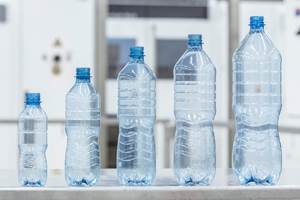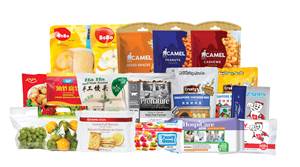Plastic Bottle Recycling Declined in 2017
The five-year compounded annual growth rate for plastic bottle recycling was 0.1 percent.
Plastic bottle recycling declined in 2017, slipping 3.6 percent to 2.8 billion pounds, according to figures released jointly by the Association of Plastic Recyclers (APR) and the American Chemistry Council (ACC). The 28th annual National Postconsumer Plastic Bottle Recycling Report indicates the overall recycling rate for plastic bottles for the year was 29.3 percent, down 0.4 percentage points from 29.7 percent in 2016. The five-year compounded annual growth rate for plastic bottle recycling was 0.1 percent.
The associations attribute the dip to a variety of industry challenges including changing export markets and a 3.6 percent decline in material collected for recycling. Ongoing increases in single-stream collection also led to increased contamination of recyclables in the near term. In addition, growth in the use of plastic for bottles was offset by continuing progress in lightweighting and increased use of concentrates with smaller, lighter bottles.
In 2017, polyethylene terephthalate (PET) bottles collected for recycling decreased by 27 million pounds. The collection of high density polyethylene (HDPE) bottles, which includes bottles for milk, household cleaners and detergents, fell by 70.3 million pounds (6.3 percent) to just over 1.0 billion pounds for the year. The recycling rate for HDPE bottles slipped from 33.4 percent to 31.1 percent.
Exports of HDPE bottles fell nearly 28 percent from 193 million pounds to 140 million pounds, or 13.4 percent of total HDPE bottles collected in 2017. The processing of recycled HDPE sourced domestically and imported fell by 31 million pounds in 2017.
“Plastic bottle recycling is proving to be resilient in the face of short-term challenges,” says Steve Alexander, president of APR. “The recycling industry is responding in kind, with some investing in increased U.S. infrastructure, a clear sign of a positive long-term outlook. These investments underscore the need for continued consumer participation and convenient access to recycling programs.”
Recent announcements include CarbonLite expanding its U.S. operations by building a third PET recycling facility in the Lehigh Valley area of Pennsylvania. The new contract builds upon Nestlé Waters’, Stamford, CT., existing relationship with CarbonLite.
Nestlé Waters North America says it will achieve 25 percent recycled plastic across its U.S. domestic portfolio by 2021. The company is expanding its relationship with key supplier, Plastrec and working with other suppliers, to support the company’s ability to nearly quadruple its use of food-grade recycled plastic, or rPET, in less than three years.
In addition, Coca-Cola just announced investments in two PET recycling initiatives. Coca-Cola is extending a loan to Ioniqa Technologies to support the development of its technology for PET upcycling and the Coca-Cola system’s procurement collaboration has established a framework with Loop Industries for authorized bottlers to purchase 100% recycled Loop PET.
“Increasing plastics recycling is a critical part of moving toward a more circular economy, and commitments made across the value chain—from brand owners to plastics makers to recyclers—give us good reason to be optimistic about the long-term prospects for plastics recycling,” said Steve Russell, ACC’s vice president of plastics. “Plastics makers in North America and Europe have committed to recycle or recover all plastic packaging by 2040.”
This year’s survey found the collection of polypropylene (PP) bottles fell 15.2 percent to 31.1 million pounds, as the PP collection rate dropped to 17.2 percent. PP caps, closures and non-bottle containers are widely collected for recycling in the United States, and these data are presented in a separate report on recycling non-bottle rigid plastics, which will be released in the coming months.
Together, PET and HDPE bottles make up 97.0 percent of the U.S. market for plastic bottles with PP comprising 1.9 percent, LDPE 0.7 percent and PVC 0.3 percent. Together, PET and HDPE comprise 98.8 percent of bottles recycled with PP comprising 1.1 percent.
Data on PET recycling referenced in the report were separately funded and published by APR and the National Association for PET Container Resources. A separate report, entitled , is available on APR’s website.
Related Content
Multilayer Solutions to Challenges in Blow Molding with PCR
For extrusion blow molders, challenges of price and availability of postconsumer recycled resins can be addressed with a variety of multilayer technologies, which also offer solutions to issues with color, processability, mechanical properties and chemical migration in PCR materials.
Read MoreFirst Water Bottles With Ultrathin Glass Coating
Long used for sensitive juices and carbonated soft drinks, KHS Freshsafe PET Plasmax vapor-deposited glass coating is now providing freshness and flavor protection for PET mineral water bottles.
Read MoreThin, High-Performance Nylon/PE Barrier Film for Thermoformed Packaging
Südpack’s Multifol Extreme film is well suited for greasy, protein-rich and frozen foods
Read MoreFlexible-Film Processor Optimizes All-PE Food Packaging
Tobe Packaging’s breakthrough was to create its Ecolefin PE multilayer film that could be applied with a specialized barrier coating.
Read MoreRead Next
Lead the Conversation, Change the Conversation
Coverage of single-use plastics can be both misleading and demoralizing. Here are 10 tips for changing the perception of the plastics industry at your company and in your community.
Read MorePeople 4.0 – How to Get Buy-In from Your Staff for Industry 4.0 Systems
Implementing a production monitoring system as the foundation of a ‘smart factory’ is about integrating people with new technology as much as it is about integrating machines and computers. Here are tips from a company that has gone through the process.
Read More












